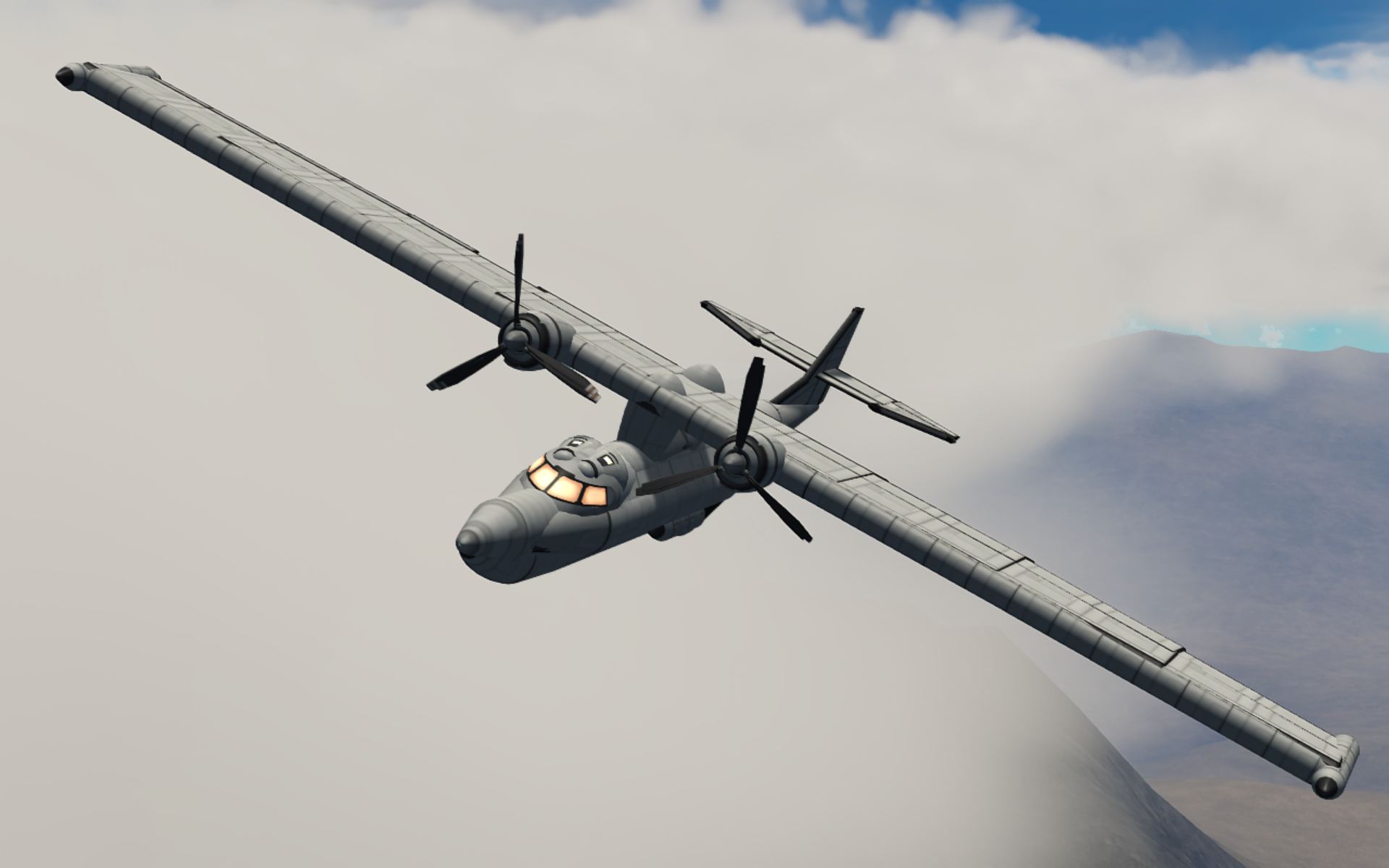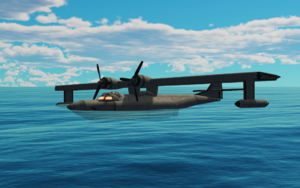TSA-181-Helvetica: Difference between revisions
Slavic blin (talk | contribs) mNo edit summary |
Slavic blin (talk | contribs) mNo edit summary |
||
| Line 4: | Line 4: | ||
|image = Helvetica3.png|imagedesc = A TSA-181-Helvetica flying over mountains in [[Bastia]] |
|image = Helvetica3.png|imagedesc = A TSA-181-Helvetica flying over mountains in [[Bastia]] |
||
|type=Flying-Boat |
|type=Flying-Boat |
||
| − | |role=Fuel |
+ | |role=Fuel Passenger transport, Search&Rescue |
|origin=[[Sahrland-Bastia]] |
|origin=[[Sahrland-Bastia]] |
||
|prod_start=2181|prod_end=2225(Planned) |
|prod_start=2181|prod_end=2225(Planned) |
||
| Line 27: | Line 27: | ||
The '''TSA-181-Helvetica''' is a twin engine flying boat manufactured and supported by [[Sahr |Sahren]] aircraft manufacturer [[Tsaregorodtsev Aviation]]. |
The '''TSA-181-Helvetica''' is a twin engine flying boat manufactured and supported by [[Sahr |Sahren]] aircraft manufacturer [[Tsaregorodtsev Aviation]]. |
||
| − | The maiden flight of the TSA-181-Helvetica took place on 22nd of Gardo, 2181 and entered into production later that year. It saw usage as a medium sized |
+ | The maiden flight of the TSA-181-Helvetica took place on 22nd of Gardo, 2181 and entered into production later that year. It saw usage as a medium sized airliner and a few were produced for the Sahren coast service and Bastian coast guard. |
==Development== |
==Development== |
||
===Helvetica=== |
===Helvetica=== |
||
| − | In 2181 Tsaregorodtsev aviation sought to compete with Abzalev by creating their own flying boats. These differed from Abzalev designs in that they used Turboprops rather than LFO turbines. These were |
+ | In 2181 Tsaregorodtsev aviation sought to compete with Abzalev by creating their own flying boats. These differed from Abzalev designs in that they used Turboprops rather than LFO turbines. These were derived from Zokesian designs as they were easier to aquire in Bastia rather than domestic tekkian models, as a majority of Tsaregorodtsev Aviation's business occured in upper bastia. |
==Design== |
==Design== |
||
| Line 38: | Line 38: | ||
| − | The interior of the Helvetica consists of a large twin seat cockpit and |
+ | The interior of the Helvetica consists of a large twin seat cockpit and a passenger cabin running nearly the entire length of the vehicle. The centre of mass is not shifted significantly because of this tried and true design convention. In order to compete with jets the cabin was made to be more spacious and comfortable, giving it a preference for less business minded individuals. |
| − | The Helvetica can compete with the much larger [[Abzalev Arrow]] as it is able to land in similarly universal conditions with much increased ease as the aircraft is smaller and easier to maneuver. |
+ | The Helvetica can compete with the much larger [[Abzalev Arrow]] as it is able to land in similarly universal conditions with much increased ease as the aircraft is smaller and easier to maneuver. The only downside is that it carries far less in the way of cargo and is innefective as a fuel transport. |
==See Also== |
==See Also== |
||
=== Aircraft of Comparable Role and Era === |
=== Aircraft of Comparable Role and Era === |
||
| + | [[Abzalev Arrow]] |
||
[[Category: Aircraft]] |
[[Category: Aircraft]] |
||
| + | [[Category: Passenger Aircraft]] |
||
Revision as of 14:02, 25 May 2024
|
Helvetica
TSA-181-Helvetica
|
|||||
|---|---|---|---|---|---|
| Flying-Boat | |||||
 |
|||||
| A TSA-181-Helvetica flying over mountains in Bastia | |||||
| Role | Fuel Passenger transport, Search&Rescue | ||||
| National Origin | Sahrland-Bastia | ||||
| Production History | |||||
| Produced | |||||
| 2181 - 2225(Planned) | |||||
| Designer | Tsaregorodtsev Aviation | ||||
| Unit Cost | 177,513(√) | ||||
| Number Built | 80~ | ||||
| Service History | |||||
| In Service | |||||
| 2181 - Ongoing | |||||
| Used By | Tsaregorodtsev Aviation Sahren coast service Bastian coast guard | ||||
| Aircraft Characteristics | |||||
| Dry Mass | 24.84 Tonnes (unloaded) 39 Tonnes (max load) | ||||
| Length | 20.5 m | ||||
| Width | 31.3 m | ||||
| Height | 6.5 m | ||||
| Propulsion | 2 x R181 Turboprop engines | ||||
| Maximum Velocity | 110.8m/s | ||||
| Operational Range | 1,600 (full load) km | ||||
| Crew | Pilot, Copilot | ||||
| Variants | none |
||||
The TSA-181-Helvetica is a twin engine flying boat manufactured and supported by Sahren aircraft manufacturer Tsaregorodtsev Aviation.
The maiden flight of the TSA-181-Helvetica took place on 22nd of Gardo, 2181 and entered into production later that year. It saw usage as a medium sized airliner and a few were produced for the Sahren coast service and Bastian coast guard.
Development
Helvetica
In 2181 Tsaregorodtsev aviation sought to compete with Abzalev by creating their own flying boats. These differed from Abzalev designs in that they used Turboprops rather than LFO turbines. These were derived from Zokesian designs as they were easier to aquire in Bastia rather than domestic tekkian models, as a majority of Tsaregorodtsev Aviation's business occured in upper bastia.
Design
The TSA-181-Helvetica is a twin engine Flying boat. It features both landing gear and deployable pontoons, allowing it to land on sea and airfields. A design similarity with Abzalev designs was that throttle is determined by adjusting propellor pitch, not engine throttle. The aircraft was never intended to go past 120m/s so little consideration was given to a high airspeed, resulting in impressive agility for its size.
The interior of the Helvetica consists of a large twin seat cockpit and a passenger cabin running nearly the entire length of the vehicle. The centre of mass is not shifted significantly because of this tried and true design convention. In order to compete with jets the cabin was made to be more spacious and comfortable, giving it a preference for less business minded individuals.
The Helvetica can compete with the much larger Abzalev Arrow as it is able to land in similarly universal conditions with much increased ease as the aircraft is smaller and easier to maneuver. The only downside is that it carries far less in the way of cargo and is innefective as a fuel transport.
